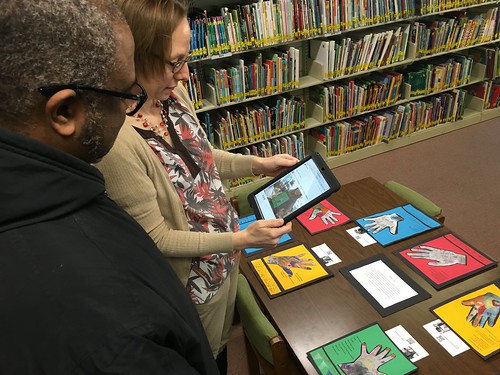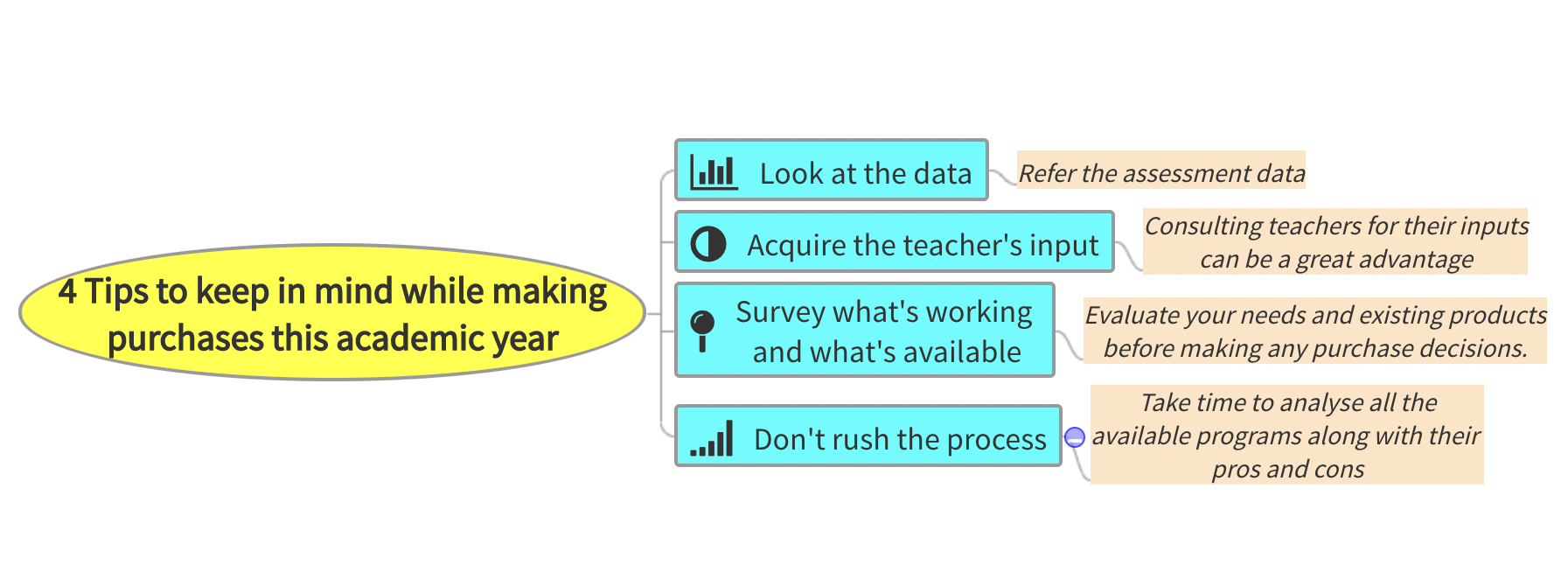Preparing for a new academic year requires a lot of work and planning. Part of this process requires making procurement decisions. Determining what curriculum, technology, or other resources are needed is very important, but it can also be an overwhelming process. With an abundance of products available, it is essential to think about the school district’s needs. When considering purchases, school administrators should utilize data, get input from teachers, and expand curriculum programs that are already proving successful.
1. Look at the Data.
Looking at data can be a first step in identifying purchases for the 2020-2021 academic year.  If assessment data from classroom teachers and/or from standardized testing shows a need for remedial programs in reading, mathematics, or other content areas, purchases should be geared towards targeting these deficits. Furthermore, budget allotments and subsequent purchases should be made to target the needs identified in the school improvement plan. Deciding how to address these needs may require considerable time to explore available products and identify gains other schools have seen by adopting those products or curriculum programs-ensuring that the supplemental plans align with the school’s needs are a necessity.
If assessment data from classroom teachers and/or from standardized testing shows a need for remedial programs in reading, mathematics, or other content areas, purchases should be geared towards targeting these deficits. Furthermore, budget allotments and subsequent purchases should be made to target the needs identified in the school improvement plan. Deciding how to address these needs may require considerable time to explore available products and identify gains other schools have seen by adopting those products or curriculum programs-ensuring that the supplemental plans align with the school’s needs are a necessity.
A favorable option that provides a sophisticated data reporting tool is Lumos StepUp. With alignment to the common core standards, the Lumos program is a strategic data-driven program that works. The Lumos StepUp resource provides rigorous standards practice through standards-aligned resources. Targeted intervention, foundational skills, and videos and apps for each learning objective are included. Furthermore, the program offers an engaging and personalized reading approach that is engaging yet still grade-level appropriate. Each lesson has a standards correlation. If your school is seeking an efficient way to access and respond to the data, the Lumos StepUp is a customizable option. For more information, check out this program at Lumos Learning.
2. Acquire the Teachers’ Input
In addition to looking at data, school administrators should also get teachers’ input regarding purchases. Teachers may have specific requests that are focused on the needs they have observed throughout the previous year. At times, teachers may have a particular application or utterly a void that needs to be addressed. Even if teachers do have a specific curriculum request, it is essential to get the necessary information to determine why that request is made for purchase. Problem-solving together can lead to informed decision-making and investments that will benefit the most students. There may be more requests than available funds, so it is critical to prioritize teachers’ demands. Consideration should also be given to the interchange of supplemental materials; in other words, will a one-time investment be useful for years to come?
3. Survey What’s Working and What’s Available
School administrators are responsible for determining what curriculum programs and supplemental programs to purchase, which requires looking at what is already available. There may be resources available in the school that is not being utilized but could address specific needs. Also, it is essential to see what programs are being used that were successful and require renewal. If teachers and students have observed success with specific applications, those programs will likely want to be purchased again.
4. Don’t Rush the Process.
There are many educational programs available for purchase, and deciding which ones to obtain can be a daunting task. Do not rush the process of getting too much too quickly; instead, focus on meeting the needs of the students. All purchases should be vetted to ensure that they are going to yield improved student learning. Take time to figure out what is needed and then choose and vet products accordingly. Once the inquiry process is complete, purchase, and implement the new tools.






